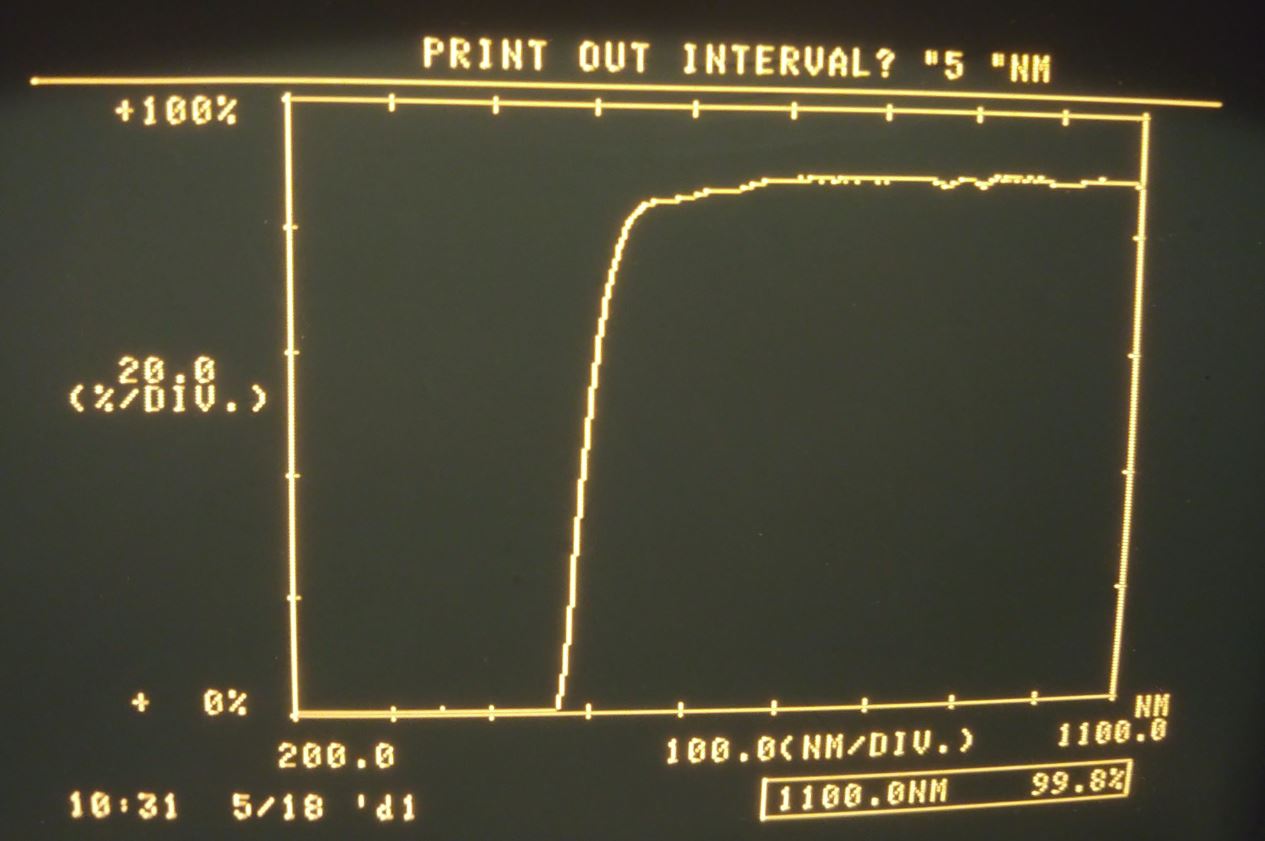Have you ever wondered if the yellow/orange plastic windows that all resin/SLA 3D printers have are sufficient?
Here’s your answer:

interesting data points:
- 500nm: 54.9% (transmission)
- 490nm: 37.9%
- 480nm: 16.9%
- 470nm: 1.6%
- 460nm: 0.3%
**What does this mean? Feel free to comment. **
My take:
First of all, this instrument is not designed to measure OD, so it can barely measure down to OD3. The actual value for 400-450nm could be lower (e.g. 0.001-0.0001% transmission).
SLA 3D printers work at 405nm. This means that the enclosure will likely protect you from the UV radiation of the printer. This is good news.
Does it also protect the resin from sunlight? To answer this question, it is important to understand how the resin behaves to wavelengths above 460nm (not measured). In my practical experience, it does not provide adequate protection. Clean the vat after each print or add another light-blocking layer for (short-term) storage.-
Largely it’s bullshit. The color of the acrylic isn’t what’s doing it, it’s that it’s acrylic.
Here’s the optical transmission properties for…just acrylic: https://www.sanatron.com/blog/optical-transmission-properties-of-acrylic.php
That’s one of the first things to learn in 3D printing, is that if it’s from China, it’s bullshit. Those carbon filters they have on mSLA printers? Bullshit. Don’t protect you at all. You’re literally killing yourself if you’re relying on them.
Hard to argue against measured data (window from an Anycubic printer).
If you notice your pure acrylic is blocking below 400nm. This orange is good for below 460nm and the reason it looks orange and not transparent.
deleted by creator
That was just a quick Google search online. I deal with these manufacturers directly, and I assure you - they are only sourcing orange acrylic. There is literally nothing special about it.
They do and it’s China. That’s why I measured it in the first place as I wasn’t sure they get the area around 400-430nm without gaps where you still have significant emissions from the LEDs.
The good news this particular color blocks all the wavelengths without gaps.
So having my printer sitting next to my cure station is perfectly fine
Especially considering the light has to go through 2 of the covers to get to the resin
Thank you for the info, I’d love to see the numbers for the smaller wavelengths but I have no idea the kind of equipment cost it’d take to get those.
0.3%. Instrument limitation. So it’s actually <0.3% for 465nm to 200nm.
Please, don’t stay for long at the same room as you have UV emitters. And if you need to go into it, make sure you have plenty of visible lighting.
Maybe your filter works, maybe it doesn’t. Maybe your printer is completely sealed off, maybe it’s leaking UV from some other part that you didn’t think to check. Just don’t take the chance, and plug it somewhere where you won’t be.
I’m confused, are you implying that 3D printers are giving off harmful UV light? Because they only use UV-A, which is non-ionizing and won’t damage your skin any more than regular sunlight (actually, it’ll damage it less.)
What is the impact of the light on your eyes?
As a rule, avoid being on the same room as UV sources. Unless you are pretty sure that what you have is not damaging. But most people just buy a full printer; those have no idea at all.
Again, the impact is nothing more than that from a standard lightbulb. Should you stare right at the UV LED at full intensity? Probably not. But should a small amount shining through a filtered medium be of any concern? Not at all.


